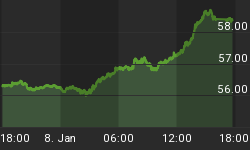Net foreign capital flows into the US fell 23% to $69.7 bln in March from a revised $90.5 bln in February (initial was $86.9 bln). The $69.7 bln in net capital flows was modestly above the $62.0 billion trade deficit for the same month.
The figure matched our forecast of $70 bln and paved sufficient in maintaining today's dollar rally, which was already emerging in early European trade as a result of the commodity-wide sell-off.
POSITIVES
-
Total net foreign purchases of US stocks rose 16% to $19.0 bln, exploiting the multi-year highs in major equity indices. But the subsequent decline in the US equity indices in the first 3 weeks of April as well as the dollar's 4-5% declines in April may have reduced on foreign demand for US equities.
-
Net foreign purchases of US corporate bonds increased 45% to $48.1 bln, the highest level since June. Foreign flows into US corporates have been the series with most positive consistency amid healthy balance sheets of US companies. But even as foreign managers partially hedge their holdings against dollar weakness, it remains to be seen whether these flows will make up for the retreat in US treasuries and equities.
-
US residents continued to be net sellers of foreign bonds, as net sales soared 100% to $7.5 bln, the biggest sale since September 2005.
-
UK holdings of US treasuries rose 3.6% to $179 bln, reflecting the intermediate purchases from OPEC nations. The chart below shows the highly positive correlation between OPEC holdings of treasuries and those by the UK.

NEGATIVES
-
Net foreign purchases of US treasuries plummeted 86% to 3-year low of $3.1 bln after amid a broad decline in demand from both official and private accounts (see next bullet).
-
Foreign central banks were net sellers of US treasuries for the first time in a year at $6.3 bln. Tis may not be a significant surprise given the meager foreign participation in this year's treasury auctions.

-
The 30% foreign participation in last week's 10-year US Treasury note auction was the lowest since February 2005. We indicated last week that foreign participation in 10-yr auctions shows a closer correlation with the dollar than with the bond yields. The exception was the drop in correlation during the Aug 2003-Aug 2004 auctions, which is partially explained by a surge in foreign interest in treasuries reflecting intervention to stabilize the tumbling dollar.
-
Foreign participation in this month's 3-year treasury auction drew showed a 24% participation, which was above February's 22% but lower than the 2003 and 2004 averages of 27% and 45%. Last month's 2-year auction drew 24% participation -- the lowest since November 2004, while the 5-year auction drew 21% participation -- the lowest since the records began in February 2003.
-
Although the high yield element of US treasuries remains a point of attraction for foreign investors, it is not reflected in the primary market auctions, leading us to believe that private investors (foreign central banks and offshore hedge) are mostly snapping them in the secondary market. But the increasingly meager foreign participation in US treasury auctions could reflect a general backtracking in foreign demand for US paper in light of the combination of a looming end to the Fed rate hikes and the emergence of the dollar's external imbalances, which is not expected to acquiesce any time soon with oil prices on the rise.
-
The concern on US fixed income paper becomes highlighted when discouraged foreign participation in treasury auctions begins to: 1) raise the cost of government borrowing and; 2) further impacts the housing market as it drives up long term yields along with rising inflationary expectations.
-
Japan, the biggest holder of US Treasuries (31% of total foreign treasury holdings), scaled down its stock by 2.8% in March $640 bln, the lowest level since February 2004. The March decline could be a result of Japanese companies paring down their holdings ahead of the end of the fiscal year. But the dwindling trend is carried through beyond just one month. We have raised our attention to this matter for the past 1.5 years when Japanese ownership of Treasuries reached a plateau. The matter became more significant when some officials of Japan's Finance Ministry remarked on the need to eventually diversify, rather than increase exposure to one a single currency. With the dollar losing 7% against the yen so far this year, Japan is likely to continue its quiet backing away of treasury purchases.

Passive dollar rally
Today's dollar rebound was largely a product of the broad pullback in metals and energy prices rather than a revision of the dollar's fundamentals such as higher probabilities of a June tightening. This week's flurry of speeches from Federal Reserve officials including Chairman Bernanke as well as the release of the US April CPI report could provide some temporary stability to the dollar in the event that hawkish remarks and high core CPI raise speculation of a June rate hike. We estimate that a key component in shaping the fate of the June FOMC meeting will be next week's releases of the new home and existing home sales reports. We think the Fed has made its last rate hike of the year, and see a 50% chance of a rate cut in December.
We see chances of a dollar advance to be more concrete against the euro this week than against the Japanese yen, which is currently fueled by discreet attempts from the Bank of Japan to reduce liquidity from the current 16 trln yen in current deposits available to commercial banks to a desired 10 trln yen.
















